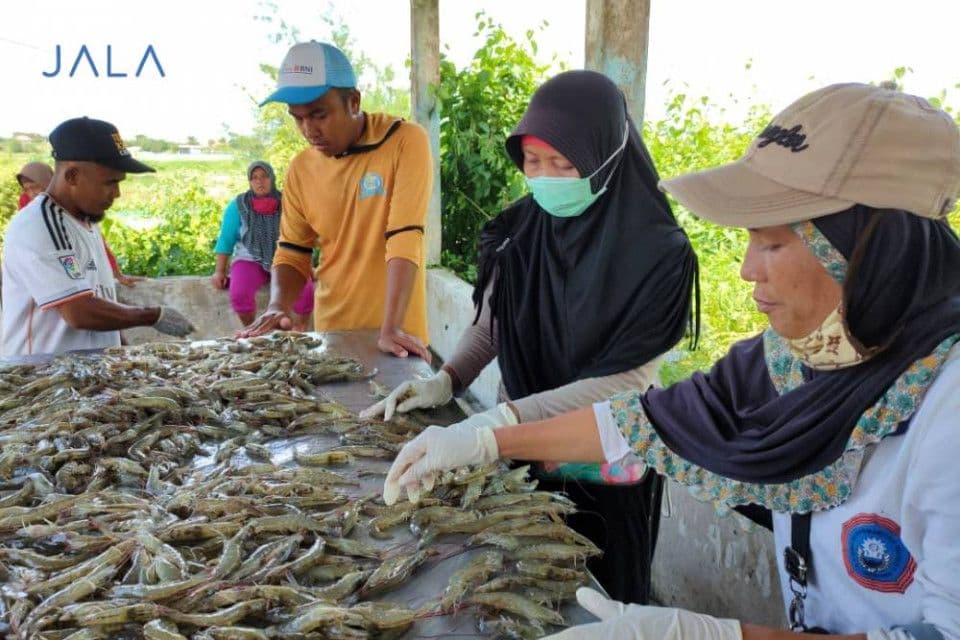
Avoid fraud from a possible buyer
There are several aspects that must be considered when you decide to become a shrimp farmer, one of which is a cautious attitude in selecting buyers. Even though you have cultivated your shrimps with good quality and quantity, you might still lose benefits if you select the wrong buyers. Here are several things to consider in selecting buyers, both before the purchase and in the field.
Before Harvest
Buyers’ background and track record
The best way to learn about the potential buyers’ backgrounds and track records is to contact others who have had contact with them, as well as through shrimp farming community groups on social media. For those of you who live in Java and Sumatra, the names of validated buyers can be checked in the shrimp price section on JALA Apps.
Price
The second thing to consider is the price. You should not be fixated on one buyer only if you want price comparison. You can also auction off the greatest bid until just one buyer remains.
Fluctuation Placement
Price fluctuation is a price set in the field based on whether the shrimp harvested is small (the price falls) or large (the price rises). In this activity, beginner cultivators may set the price incorrectly. In essence, be sure of the size of the shrimp you harvest to earn a good price.
Payment Method
There are three payment methods that are often used by buyers, namely cash, down payment, and tempo payment. We recommend that you accept cash payments from buyers that you just know to avoid fraud. Meanwhile, tempo and down payment can be used for buyers who have previously transacted with you and have never experienced delays or problems.
Sampling
Sampling is recommended to do during mid-harvest. For example, if the target is 1 tonne, you can do a sampling process when the scale reaches 500kg or ½ tonne. After that, take 3-5kg for sampling.
During Harvest
Check Scales
The first thing that you need to do when a buyer comes to the location, especially one who has just interacted with you, is to check the scales. The easiest way to see if their scales are normal is to place a 25kg pack of feed on their scales. If the weight of the feed is not exactly 25kg, it is possible that the scales they’re using are deceptive.
Check the cart
You can put 3-4 baskets on the scales. If there is a gap between the baskets, it is possible that the basket is deficient. A difference of fewer than 20 grams between the baskets is still tolerable.
Weighing Process
Monitor the weighing process. Both cultivator and buyer should do the note-taking. This is done to minimize risks, particularly for buyers who have recently transacted with you.
Sampling Process
This stage determines the price of your shrimp during harvest. Sampling should be done in accordance with the agreement made at the beginning of the conversation. It’s best to take the shrimps from the middle or bottom of the basket. The shrimps here are usually still wet, in contrast to the shrimps at the top, which have been exposed to the wind and have shrunk in weight.
Receipt or transfer
Before the buyer leaves the location, complete all agreed-upon transactions. If the initial agreement called for cash payment, don’t let the buyer leave until you’ve received the money. Meanwhile, if the initial agreement is to pay down payment or tempo, ask for a receipt with a stamp on it.





